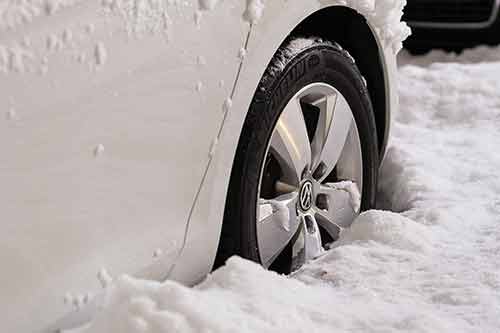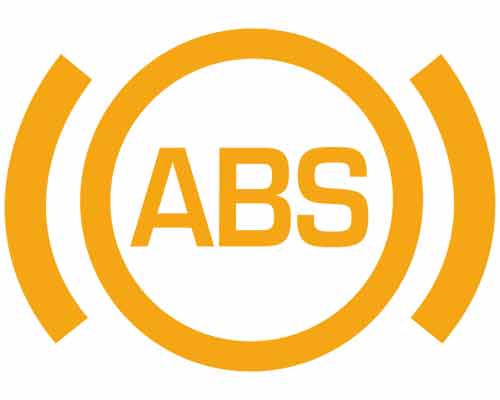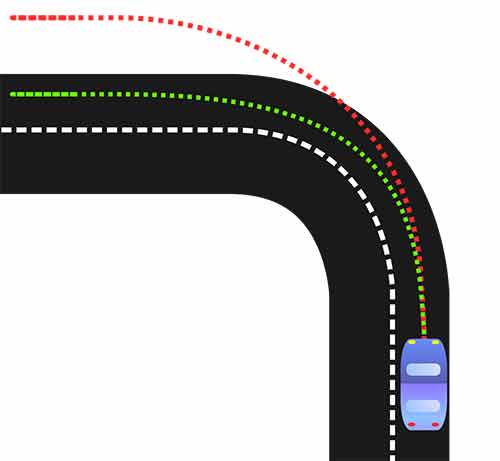08 Dec Ways To Get Out Out Of A Skid – All 5 Types Of Them
We recently talked about car safety features and how they can help you navigate the wintry roads. With winter weather just waiting to cover our roads with snow and black ice, we think it’s important you know what to do if you ever get into a skid. With some help from ArtOfManliness, we’ll be listing 5 different types of skids one could get into while driving, and how you could safely get out of these skids and correct your car’s trajectory.
Losing control of your vehicle can be one of the scariest feelings in the world. Especially if you’re on a highway. It can be extremely easy to lose focus as panic sets in. The very fact that there are different types of skids and each type requires a different maneuver to correct is scary enough. In addition, it’s important to know if your car is front-wheel drive, rear-wheel drive, or all-wheel drive. This could help you understand the type of skid your car might get into and how to get out of it.
Without further ado, here are the 5 different types of skids along with tips on how you could 1) get out of them and 2) prevent them from happening:
The Wheel Spin
Most drivers who’ve driven through snow-covered roads have experienced “The Wheel Spin”. When you accelerate and your tires spin at a speed your car is not traveling at, you’re in a wheel spin. This type of skid can lead to different outcomes depending on whether your car is front-wheel drive, rear-wheel drive, or all-wheel drive.

The cause of a wheel spin is simple – accelerating too fast on a slippery or snow-covered road. The tires don’t properly grip the pavement, due to the lack of friction, causing them to spin rapidly. Don’t underestimate this type of skid. It might not be too dangerous if you’re just trying to back out of your driveway. But if it happens while you’re already accelerating, or worse, during a turn or on a steep hill, it could lead to catastrophe.
The solution, however, is relatively simple. Although it’s simple, it can create panic. If it happens to you, the first thing you need to do is remain calm (as with all skids) and remember how to get out of this type of skid. You need to regain traction. Take your foot of the accelerator, and retry accelerating with a much lighter foot. Slowly and cautiously accelerate (*unless this could make the situation more dangerous, ie. if you’re headed down a steep hill) until your tires regain traction. You might have to give this a couple of tries if your wheels are stuck in snow. Prevent ever getting into a Wheel Spin by taking it slow on the road when it’s slippery or covered in snow.
Wheel Lockup
“Wheel Lockup” occurs when you brake too aggressively/suddenly. Your vehicle could still be in motion, but your tires will stop turning. This presents a dangerous situation if you’re ever stopping abruptly to avoid a collision. Fortunately, “Anti-Lock Braking Systems” (ABS) are now in most cars on the road and are designed to keep your wheels from locking up should you ever brake too aggressively. Check your car’s user manual, or look on the dashboard when you start your car for the ABS symbol, to see if your car has this safety feature installed.

If you don’t have the ABS installed in your car, remember that the solution to Wheel Lockup is simple. But Wheel Lockup can prevent you from steering in an emergency situation when you need to steer clear of an object. And you may only have fractions of a second to regain control. If your wheels lock up on you because you’re braking to avoid a collision, remain calm and remember how to get out of it. Pulsate your brakes. Release them and softly/progressively brake again until you feel your wheels turn with your steering wheel toward a safe zone. Repeat this rapidly over and again until you come to a full stop in a safe area (ie. the side of the road).
When we see an accident approaching, it may be instinct to slam on the brakes. But without ABS, this is not always the right move. You’d be surprised at how quickly your car can come to a full stop if you apply the proper amount of pressure to your brakes. If you suddenly slam on the brakes, your wheels will likely lock up. But if you progressively hit the brakes and remain calm in this type of emergency, you may be able to prevent wheel lockup. Remember to keep a very fair amount of distance between you and other cars on the road.
Understeering
An “Understeer” skid can occur when your car’s front tires lose traction and you’re unable to turn around a corner. This occurs most often when you haven’t slowed down enough before making a turn. If this ever happens to you and your car is front-wheel drive, do not spin the front tires. Additionally, aggressively braking can make this situation more dangerous. Your wheels may lock up and you’ve now lost your ability to steer. Another cause of the Understeer Skid may be a discrepancy of weight between the front and rear of your car.

If you’re ever in an Understeer skid, don’t give in to the thought that turning your wheels further in the direction you planned to turn will rectify the situation. It will likely make it worse. Your best bet is to try to regain traction. Jerking your wheels straight and then slowly turning them in the direction you want to go can help your wheels gain traction so you avoid skidding off the road.
Prevent ever getting into an Understeer Skid by slowing down to an appropriate speed before turning. Pay attention to the speed limit signs at exits when you’re on the highway. If the roads are icy, snowy, or slippery, go slower than the recommended speed.
The Oversteer Skid
The “Oversteer Skid” happens when your rear tires lose traction on the road and propels your car into a slide, usually caused by a wheel spin in rear-wheel drive vehicles. It can often occur when you’re going too fast and apply the brakes while turning, which shifts much of the weight off the rear tires and onto the front.
The solution to an Oversteer Skid depends on whether you’re driving a rear-wheel drive car or a front-wheel drive car. If you’re driving a rear-wheel drive car, your first step should be to take your foot off the gas. If you’re driving a front-wheel drive car, take your foot off the brakes and gently apply gas. Then, slightly steer into a safe direction. If you jerk your steering wheel too quickly, you won’t gain any traction and thus continue to keep skidding. Progressively turning will help your wheels gain traction.
Prevent ever getting into the Oversteer Skid as you would prevent getting into an Understeer Skid – take it slow. Take it even slower on icy or snowy roads.
The Counterskid (Or Fishtailing)
When you fail to correct an Oversteer Skid, you may end up in a “Counterskid”, or “fishtailing”. Your vehicle’s rear end will skid one way, and then another, like a pendulum. It’ll build momentum with every swing until you can rectify it. A Counterskid can be extremely scary. You must remember to remain calm. If your rear-end keeps fishtailing, you may lose complete control by its third swing.
If you’re in a car with rear-wheel drive, your first step is to take your foot off the gas. If you’re in a car with front-wheel drive, take your foot off the brakes and gently accelerate. With each swing, slightly turn your wheel toward the direction you want to go. Again, if you turn your wheel too far, you won’t gain traction and you’ll continue to skid. So, remain calm, and continue to slightly turn your wheel in the direction your rear-end is fishtailing toward (likely the direction you were heading) until you gain complete traction back and can recover your trajectory.
These suggestions are made by ArtOfManliness and may not always be the best option. It is up to you to know the feel of your car and prevent yourself from ever getting into a skid. The roads will be dangerous when winter weather hits. If you must drive in inclement weather or on icy, snowy roads, take it slow. And keep these suggestions in mind.

About the Author
Steven Palermo is the managing partner for Palermo Law, Long Island’s Personal Injury Law Firm. He has been helping people receive compensation for their injuries for over 21 years. He focuses on cases involving car accidents, truck accidents, construction accidents and slip and fall injuries.
His book The Ultimate Guide to Handling New York Car Accident Claims details the ins and outs of a car accident claim in a simple, easy-to-read manner.

